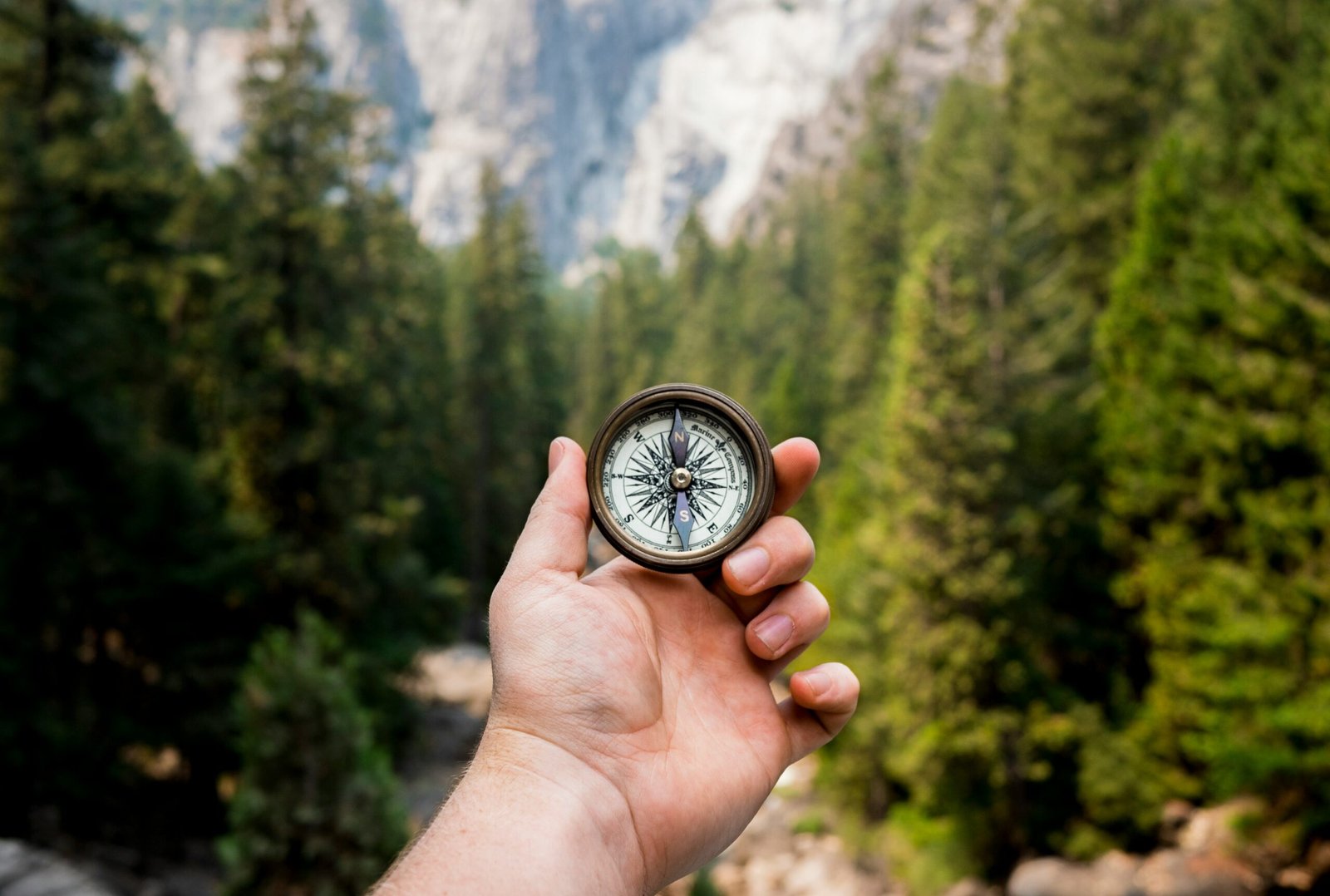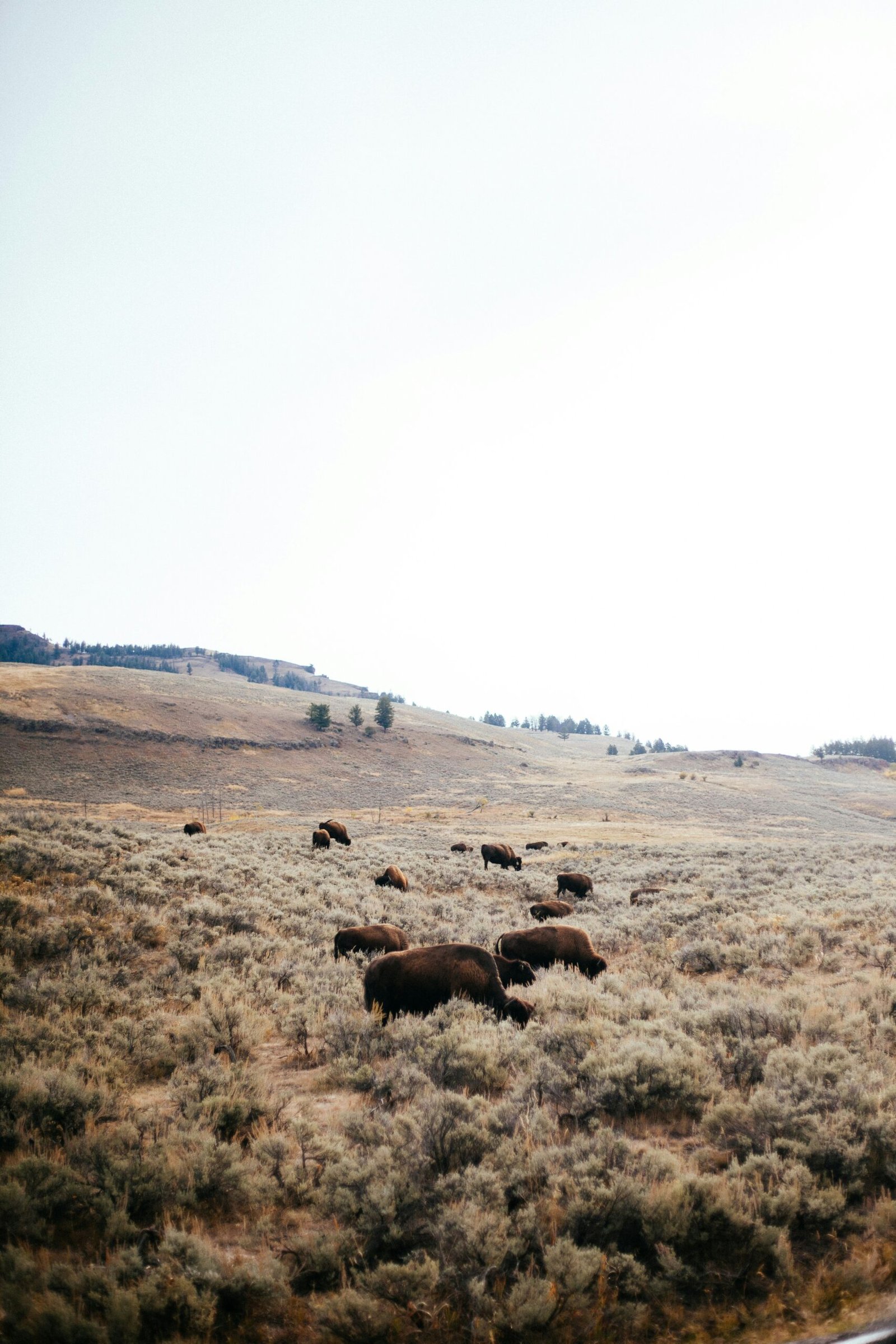Introduction to Diversity in Travel
The United States is a vast and varied landscape, offering a remarkable tapestry of experiences shaped by its rich cultural and geographical diversity. From the snowy peaks of the Rocky Mountains to the sun-kissed beaches of California, each region provides distinct travel experiences that reflect the complex identity of the nation. This diversity not only showcases breathtaking natural beauty but also highlights the multitude of cultures and histories that coexist within its borders.
As travelers explore various states, they encounter a spectrum of traditions, foods, and lifestyles that contribute to the unique character of each destination. The melting pot nature of American society invites individuals to experience different festivals, art forms, and cuisines that represent the myriad backgrounds and stories of its inhabitants. For instance, a visit to New Orleans offers vibrant jazz music and Creole cuisine, while a trip to New York City introduces visitors to a bustling urban atmosphere filled with art exhibits, Broadway shows, and an eclectic culinary scene.
Geographically, the United States is home to dramatic landscapes ranging from arid deserts in the Southwest to lush forests in the Pacific Northwest. This physical diversity invites outdoor enthusiasts to engage in various recreational activities, such as hiking, skiing, and surfing, all of which can be found in different regions. The rich biodiversity also leads to numerous national parks that provide opportunities for exploration and immersion in nature.
As this blog post unfolds, it will delve deeper into the diverse travel opportunities across the United States. Each section will reveal how this diversity contributes to a captivating journey through the country, inviting readers to appreciate the uniqueness of their travel experiences while encouraging them to embark on their own adventures. The allure of exploring such a multifaceted nation promises an engaging and enriching experience for every traveler.
Stunning Landscapes: From Coast to Coast
The United States is renowned for its vast and varied landscapes, which encompass everything from serene beaches to rugged mountains, lush forests, and arid deserts. Each region offers a unique vantage point on the beauty of nature, appealing to a diverse array of travelers looking for distinct experiences. In California, the coastline invites visitors to unwind on its picturesque beaches, where the golden sands and Pacific waves create an idyllic atmosphere for relaxation and recreation. With plenty of opportunities for sunbathing, swimming, and surfing, California’s beach culture is an alluring facet of American life.
Beyond the coast, the mountainous regions of the western United States, particularly the Rocky Mountains, present an entirely different encounter with nature. Stretching from Canada through New Mexico, this range is characterized by towering peaks and deep valleys, making it a prime destination for hiking, skiing, and wildlife observation. The breathtaking vistas provide an invigorating backdrop for outdoor enthusiasts, fostering a spirit of adventure that is quintessentially American.
Further east, the Appalachian Mountains offer a contrast in terrain with their rolling hills and dense forests, creating a rich habitat for diverse flora and fauna. Travelers can explore numerous trails wrapped in autumn hues or witness the splendor of wildflowers in spring, making it a year-round destination for nature lovers. Meanwhile, the southern regions, defined by the breathtaking beauty of the desert landscapes in Arizona and New Mexico, captivate visitors with their unique ecosystems and stunning rock formations. These expansive arid areas showcase how varied the geographical beauty of the United States can be.
In summary, the diverse landscapes of the United States, radiating from its coasts to its mountains and deserts, play a crucial role in shaping the travel experiences available to both residents and visitors. Each setting offers distinct visual and emotional appeals, encouraging exploration and appreciation of the country’s remarkable natural heritage.
Cultural Melting Pots: Cities and Towns
The United States is renowned for its diverse cultural landscape, with major cities and small towns serving as vibrant melting pots of traditions and influences. Each locale contributes to the rich tapestry of American identity, showcasing a unique blend of customs, foods, and artistic expressions that reflect both its historical roots and contemporary evolution.
For instance, New Orleans exemplifies this cultural amalgamation, where the arts scene flourishes amid a backdrop of jazz, Cajun cuisine, and Mardi Gras celebrations. The city’s unique blend of French, Spanish, African, and Creole influences is evident not only in its music and festivals but also in its architecture and culinary offerings. Visitors can experience the heartfelt rhythms of live jazz on Frenchmen Street or savor beignets at Café du Monde, both of which embody the city’s spirited cultural essence.
On the other hand, San Francisco stands as a major tech hub, influencing global technology trends while celebrating its multicultural heritage. The city is known for its dynamic neighborhoods such as Chinatown, the oldest and one of the largest outside Asia, which offers a distinct taste of Chinese customs, cuisine, and festivals. Additionally, the LGBTQ+ community has fostered significant cultural contributions, particularly visible in the iconic Castro District, enriching the city’s identity and commitment to inclusivity.
Meanwhile, Philadelphia carries deep historical significance as the birthplace of America, showcasing an array of cultural heritage that traces back to the founding of the nation. Its institutions, such as the Philadelphia Museum of Art and the Liberty Bell, reflect the American spirit, while traditional foods like cheesesteaks and soft pretzels offer a glimpse into local customs. Each town, whether large or small, carries its own stories, customs, and traditions, making the United States a truly diverse cultural landscape worth exploring.
National Parks: Nature’s Wonders
The United States is home to a remarkable array of national parks, each showcasing the country’s diverse ecosystems and breathtaking landscapes. These protected areas provide not only stunning views but also essential habitats for countless species. From towering mountains to expansive deserts, national parks serve as a testament to the natural beauty and rich biodiversity present within the nation. They play a crucial role in conservation efforts, enabling ecosystems to flourish while offering visitors a chance to experience nature firsthand.
One of the most renowned national parks is Yellowstone, celebrated for its geothermal features and rich wildlife. Established in 1872, it was the first national park in the world and remains a marvel for millions of visitors each year. The vibrant geothermal pools, such as the famous Old Faithful geyser, along with the diverse wildlife including bison, elk, and wolves, offer an unmatched experience for nature enthusiasts. Likewise, Yosemite National Park, known for its iconic granite cliffs, cascading waterfalls, and ancient giant sequoias, captivates visitors with its scenic vistas and a plethora of outdoor activities.
Activities such as hiking, camping, and wildlife viewing abound in national parks, providing an opportunity to immerse oneself in the natural environment. Hiking trails range from easy walks to challenging climbs, catering to individuals of all skill levels. Campgrounds within the parks offer an authentic experience of sleeping under the stars, while educational programs present opportunities to learn about local flora and fauna. Wildlife enthusiasts can observe animals in their natural habitats, enhancing appreciation for nature’s intricate balance.
Preserving these national parks is vital for future generations to experience their beauty and ecological significance. Protecting these natural treasures ensures that we can continue to enjoy the outdoor experiences they offer while fostering a sense of stewardship towards the environment.
Culinary Adventures: A Taste of Diversity
The culinary landscape of the United States is as diverse as its population, blending rich cultural heritages with regional flavors that reflect the history and traditions of myriad communities. From the smoky taste of southern barbecued meats to the robust flavors of New York-style pizza, every bite tells a story of migration, tradition, and innovation. As one traverses the country, it becomes evident that food serves not only as sustenance but also as a means of cultural expression, showcasing the unique characteristics and histories of various regions.
In the southern states, barbecue represents not just a meal but a gathering of families and friends, steeped in rituals that differ from one locality to another. Meanwhile, New England offers its iconic clam chowder—a creamy, savory dish reflecting its maritime culture. Exploring the unique flavors of the West Coast, travelers can indulge in fresh seafood and farm-to-table cuisine, while the Midwest serves hearty dishes like deep-dish pizza and tender meats, both embodying the region’s agricultural bounty.
To fully appreciate the rich tapestry of American cuisine, several food festivals across the country warrant a visit. Events like the annual BBQ Festival in Kansas City or the New Orleans Jazz & Heritage Festival not only celebrate food but also incorporate music, art, and cultural traditions that enhance the dining experience. Local eateries further showcase the regional diversity; diners can find hidden gems offering authentic dishes that encapsulate the area’s culinary identity.
Travelers seeking to embark on culinary adventures should embrace the vibrancy of the United States’ food scene, as it offers a delightful journey through flavors and history, making every meal an extraordinary experience worth savoring.
Unforgettable Road Trip Experiences
The United States is synonymous with expansive landscapes, vibrant cultures, and diverse experiences, making it a premier destination for road trip enthusiasts. One of the most iconic routes is Route 66, often referred to as the “Main Street of America.” This historic highway spans over 2,400 miles from Chicago to Santa Monica, offering travelers a unique glimpse into America’s past and an array of attractions that celebrate its culture. Along the route, travelers can indulge in local cuisine, visit quirky roadside attractions, and immerse themselves in charming small-town communities, each contributing to the nation’s rich tapestry.
Another spectacular journey is the Pacific Coast Highway, which stretches along California’s stunning coastline. This route provides breathtaking views of the ocean and access to picturesque beaches, national parks, and coastal towns. Stops such as Big Sur, Monterey, and Santa Barbara highlight the natural beauty and tranquil atmosphere unique to the West Coast. Travelers can explore hiking trails, savor fresh seafood, and breathe in the salty air, making each stop a memorable part of their adventure.
For those planning the perfect road trip, careful preparation is essential. Consider creating a flexible itinerary that allows spontaneous stops at attractions or natural wonders outside the main route. Ensure your vehicle is road-ready, checking essential components like oil, tires, and brakes. Bring along snacks, entertainment options, and a first-aid kit for a smooth journey. Lastly, embracing the essence of each state you traverse, from history to local customs, enhances the overall travel experience, showcasing the rich diversity that America has to offer. Traveling by car not only provides freedom and independence but also fosters connections with the land and its people, making every road trip unforgettable.
The Rhythm of America: Music and Arts
The United States boasts a rich tapestry of music and arts that reflects its vast diversity. Across the nation, various genres of music have emerged, each rooted in the cultural influences of its birthplace. For instance, New Orleans is famously known as the birthplace of jazz, a genre that blends African American musical traditions with European influences, creating a unique sound that has captivated audiences worldwide. Not only does New Orleans feature iconic venues like the Preservation Hall, but it also hosts the annual New Orleans Jazz & Heritage Festival, celebrating the city’s rich musical history.
Moving to the heart of Tennessee, Nashville has earned the title of “Music City” for its profound impact on the country music genre. The Grand Ole Opry is a historic venue that showcases both emerging talent and established artists, making it a pilgrimage site for country music fans. The vibrant music scene is supported by numerous festivals, such as the CMA Music Festival, which draws visitors eager to experience the sounds that define American country music.
In addition to music, the arts scene in the United States is equally diverse and vibrant. Many cities boast thriving local art communities, where galleries, theaters, and performing arts centers contribute to the cultural landscape. Cities like San Francisco and Chicago are home to a variety of art fairs, exhibitions, and public art installations that reflect their unique artistic expressions. The street art scene, in particular, has gained recognition as a powerful form of expression, giving voice to underrepresented communities across urban spaces.
Throughout the year, numerous festivals celebrate the arts, from the Sundance Film Festival in Utah, showcasing cinematic accomplishments, to the Art Basel fairs that highlight contemporary art from around the globe. Such events bring together artists, collectors, and enthusiasts, fostering a deeper appreciation for the artistic innovations emerging from the diverse cultural backgrounds that make up this great nation.
Sports: A National Passion
Sports in the United States embody a rich tapestry of regional identity, cultural values, and community pride. They serve not only as a source of entertainment but also as a catalyst for social cohesion among diverse groups. The influence of sports is perhaps most visible in the iconic leagues such as the National Basketball Association (NBA) and the National Football League (NFL), which have cultivated passionate followings across the nation. These leagues feature some of the most talented athletes and unite millions of fans in support of their teams.
The NFL, for instance, stands out with its culmination event, the Super Bowl, which draws millions of viewers both domestically and internationally. This annual event transcends sports, transforming into a cultural phenomenon that showcases unique advertisements, halftime performances, and regional pride. Similarly, the NBA’s playoffs and Finals highlight the thrill of basketball, featuring historic rivalries like the Boston Celtics and Los Angeles Lakers, which not only captivate fans but also contribute to the narrative of American sports history.
Beyond professional sports, recreational activities encompass a wide range of pursuits that reflect local traditions and lifestyles. In the South, college football reigns supreme, with tailgating traditions and passionate alumni fostering a deep sense of belonging to schools and communities. Meanwhile, in the Northeast, professional hockey captures the hearts of many, particularly with rivalry games that often intensify school and community pride. These variations in sports culture highlight the diversity of recreational preferences across the United States, illustrating how localized interests enhance the overall sports experience.
Moreover, sports play a significant role in shaping social issues within communities, including discussions around inclusion and systemic inequalities. Initiatives aimed at increasing participation in sports among marginalized groups demonstrate how the sports landscape is evolving. This national enthusiasm for sports, combined with its potential to instigate positive change, underscores the complex relationship between athletic competition and American cultural identity.
Tips for Navigating Diversity in Travel
Traveling across the United States offers a rich tapestry of cultures, landscapes, and experiences that can be both thrilling and overwhelming. To fully appreciate this diversity, it is essential to approach your travels with an open mind and a willingness to engage with the various communities you encounter. One valuable tip is to conduct thorough research before embarking on your journey. Familiarize yourself with the regional customs, traditions, and languages that define the areas you plan to visit. Knowledge of local etiquette can greatly enhance your interactions and help you avoid unintentional misunderstandings.
Another important aspect of enjoying diversity in travel is the selection of a well-rounded itinerary. Consider including a range of experiences that highlight different aspects of American life, from visiting bustling urban centers to exploring rural landscapes. This approach not only enriches your travel experience but also promotes a deeper understanding of the variety present in the nation. Make time to savor local cuisine, attend cultural festivals, and engage with locals. Such experiences can foster connections and create lasting memories.
Be open to new experiences and perspectives while traveling. Embrace opportunities to step outside your comfort zone, whether that means trying unfamiliar foods or participating in traditional activities. This openness can lead to unexpected and rewarding interactions with diverse groups of people. Also, remember to remain respectful and receptive to different ways of life; approach each community with curiosity rather than judgment.
Lastly, allow for flexibility in your plans. The beauty of travel lies in its unpredictability, and you may discover hidden gems or unexpected events that enrich your journey. By being adaptable and willing to explore, you can maximize your enjoyment and appreciation of the diverse offerings throughout the United States.





